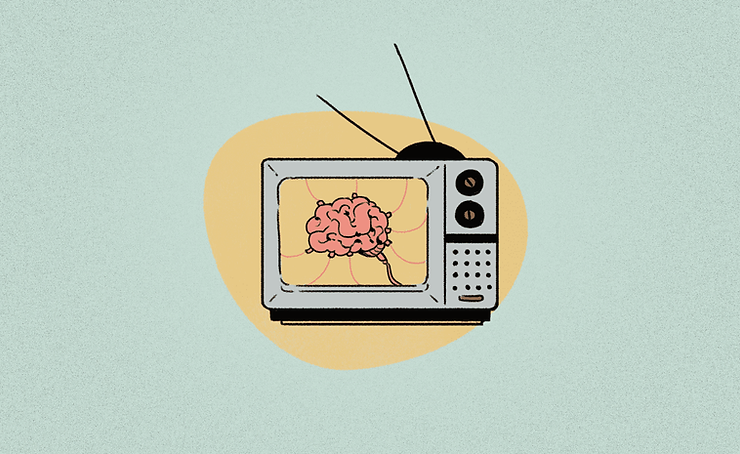Anchoring bias, a type of implicit bias, sways the decision-making process. First impressions, or scant information, are the “anchors” that color your vision when making decisions — and they are not always based on sound reasoning, logic, or current data.
Anchoring bias can serve us well when making quick decisions that don’t have radical consequences, of the which-socks-to-wear variety. But it can also work against us, leading us to make mistakes by relying on scant information.
What is anchoring bias?
Anchoring bias is a type of bias based on first impressions, prior life experiences, or other reference points to form an opinion of someone. It's typically a reference point, which acts as an “anchor” to decisions about a person, place, or activity. The anchoring information may or may not be correct, current, or even relevant.
Drivers include fleeting feelings and perceptions rather than fact-based information collected and analyzed over time. This cognitive bias is a form of subjective reasoning, as opposed to reasoning based on logic and objectivity.
Examples of anchoring bias
Let's say a new colleague was jovial and laughed easily when first introduced to the team, but has since become rather prickly. Everyone is now wondering when the person’s amiable nature, obviously their true nature, will resurface. The tendency to rely on first impressions can create a situation where someone jumps to conclusions.
Conversely, relying too heavily on scraps of information is another form of anchoring bias entirely. Take for example an HR associate filling an open position. Who would be a better hire, the state school or Ivy League graduate? She might lean towards the Ivy League graduate, simply based on the anchoring information of a prestigious school’s name, before even reading an applicant’s cover letter and learning that the graduate of a state school has far more relevant experience.
How does anchoring bias affect the workplace?
Each individual has had their own life experiences that they might unconsciously use to anchor their decisions. Gender, ethnicity, education, and socio-economic level are all factors that can contribute to a person’s anchoring bias. Allowing anchoring bias to sway key decisions with enormous impact — like hiring, salary, and promotions — can be unfair, and even harmful.
- Hiring: Managers might consider qualifications but anchor to bits of information in candidate resumes, such as what school they attended or what company they previously worked at.
- Procurement: Selective accessibility, or making judgments based on cherry-picked bits of information, can cause a company to make poor business decisions. For example, if a company experiences a period of supply chain hold-ups from suppliers in a particular country, a manager might jump to the conclusion that any manufacturer from that country is unreliable and untrustworthy — regardless of whether the issues have been resolved or not.
- Career advancement: Anchoring bias could reward employees who feel more comfortable pitching themselves and their skills. For example, a manager might anchor onto one staffer’s positive self-evaluation during the annual performance review, especially if no one else advocated for themselves. So even if not checking off all the boxes, that person may be the first recommended for a promotion.
- Anchoring bias can impact salary negotiations: When a hiring manager sets the bar low with an initial salary offer, they are anchoring negotiations to a starting pay in their favor. Let’s say an applicant is aiming for a $90,000 salary, but when the hiring manager first suggests $50,000 as a starting point, anchoring bias makes the potential hire doubt his initial salary goal, which wouldn’t be in question, if initially offered, say, $85,000.
Halo and horn effect
The “halo and horn effect” is another type of cognitive bias based on personal thoughts and feelings rather than the full picture, which we discuss in our Diversity, Equity, and Inclusion training. It's rooted in anchoring bias.
The halo effect occurs when one positive trait impacts how one is judged in unrelated circumstances or domains. This can be something like viewing a coworker who runs marathons on the weekends as motivated, hardworking, and efficient — regardless of the fact that, while at work, they are frequently late to morning meetings and never fully prepared to present.
The horn effect is when an attribute that’s perceived as negative causes a person to jump to inaccurate conclusions about a person’s overall abilities. A manager who frequently misplaces her key card might potentially be perceived as an ineffective or disorganized leader, even though her team leaves their weekly meetings feeling energized and equipped to get to work because of her effective, action-oriented management skills.
How to avoid anchoring bias in the workplace: 4 tips for employers
The first step in eliminating anchoring bias is awareness. Next, comes examination: Ask yourself which preconceived ideas, first impressions, or limited and outdated information might be coloring your decision-making process. A few strategies:
1. Use multiple sources when making big decisions
Conduct due diligence and research information using a variety of sources including journals and articles. Also, ask for opinions from professional advisors as well as friends and colleagues who may have had to make a similar decision. In hiring and promotions, this can look like ensuring there are multiple candidates to consider.
2. Evaluate your reasoning
Pause, then take a moment to examine your decision-making process. Acknowledge how you arrived at your final decision: Did you actively solicit feedback and dissent? Did you conduct sufficient research on the situation? Is your decision based on facts or emotion?
3. Ask for a second opinion
And perhaps, a third and fourth opinion. Proactively seek out and listen to several viewpoints when making a big decision.
4. Train it away
No, really, we're serious. Both of our Hiring & Interviewing and DEI trainings address the 13 types of biases, and they're important to be aware of as you and your employees navigate the workplace.
Building inclusive workplaces in the long-term with Ethena
Anchoring bias occurs for a reason — we can’t examine the many little decisions we make every day. But when it influences more complicated decisions that impact colleagues, business, friends, and family, it can be damaging and have a lasting impact. A more thorough investigation into one’s thought process and arrival at a decision through research, second opinions, and introspection can be effective in countering anchoring bias in the workplace.
One great way to combat bias year-round? Inclusive, research-backed training from Ethena. Whether you’re looking to improve your hiring process, build a better culture of diversity, equity, and inclusion, or looking for training that goes the extra mile to identify bias as it exists in modern workplaces, Ethena’s training platform might be the perfect solution for your team.
About Ethena
Ethena is a modern compliance training platform that delivers current, cringe-free content that employees actually enjoy. Our course on Diversity, Equity, and Inclusion brings the complexities of bias to life through thoughtful real-world examples, dynamic multimedia, and actionable next steps. Talk to a member of our team to see if Ethena is right for your company.









